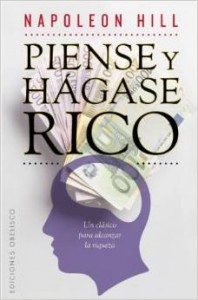You’ve heard it said hundreds of times.
You want to learn Spanish? Go to Spain. Go to Argentina. Go to Mexico. Go to Chile.
Go to a Spanish-speaking country. This is the only way.
Well, no, it’s not.
It’s absolutely possible to reach a near fluent level in any language without ever setting foot in a country where this language is spoken (although doing so does help tremendously).
I was browsing the internet recently and read an article about language learning from Benny the Irish polyglot. He wrote something in that article that hit me like a ton of bricks. He basically said that if an Irish dude can learn Egyptian Arabic while being in Brazil, what stops you from learning the language you want to learn?
So don’t listen to people who claim that they can’t speak Spanish because of the lame excuse that they haven’t been abroad.
This doesn’t prevent you from getting really good at speaking this language; you can totally create a Spanish immersion experience while being at home. And here’s how you can go about it.
6 Powerful Ways to Learn Spanish from Home Through Immersion
1. Write in Spanish Every Day
Writing is indeed a highly engaging exercise for the mind, regardless of the language you write in. Writing is essentially putting thoughts on paper, so imagine if you were to practice writing in Spanish for just 5-10 minutes every day. Do you think your Spanish speaking abilities would improve? You better believe it!So what exactly do you write about? Well, some people already have the habit of journaling about what’s happening in their lives. If you’re already used to doing this, keep on going, but do it in Spanish from now on. What if you can’t write in Spanish? Well do it anyway.
Start using Word Reference, Google Translate or some other dictionary apps on your smartphone to help you out. Make sure not to overuse these resources, though, because the goal is to communicate in Spanish without relying on dictionaries and translators.
Writing in a journal is a tremendous personal development exercise that I would encourage anybody to take on, but if you’re still on the fence about it or not sure what “journaling” entails, there’s a simpler way to look at it.
During this writing time, jot down either an interesting experience that happened to you that day, something you care about or something you’d like to remember. Honestly, it doesn’t matter that much what you are writing about, just as long as you are doing it sincerely and putting some effort into it. This means don’t just copy things from Google Translate—that’s not how you’ll learn Spanish.
2. Set a Time to Think in Spanish
As mentioned in the previous section, writing is like thinking on paper. So now it’s time to actually think in Spanish. How in the world can you do such a thing? Well, you do it step by step, little by little.Thinking in Spanish is pretty hard when you are not used to it, which is why you need to ease yourself in. So start by thinking in Spanish for 30 seconds to one minute every day. When you feel more comfortable doing this exercise, do it for longer periods of time—up to five minutes a day. This is already a lot, and you’ll find yourself thinking spontaneously in Spanish sooner than you think.
So what do you think about during this time? A simple technique is to think about an open question (not a yes/no question) and try to answer it in Spanish.
For example, you may ask yourself, “What will I be doing tomorrow afternoon”? And you might answer, “Seguramente estaré tomando una cerveza con mis compañeros de trabajo. Después tendré que volver a casa para seguir trabajando en este proyecto que me tiene ocupado desde las últimas semanas….” (I will most likely have a beer with my colleagues. After that, I will have to return home to keep on working on this project that I’ve been busy with for the last few weeks…).
3. Watch Videos in Spanish on FluentU
This is an interesting one. Sure, you can watch movies or TV shows in Spanish, but if you want something more personal, maybe you’ve tried this:Go to YouTube and type in “[name of your hobby translated to Spanish] videos.” For example, type in el arte del jardín (gardening) or arpa (harp) videos. Then prepare yourself a playlist of twenty or so videos that you can watch whenever you want on your computer, smartphone or tablet. Dedicate a few minutes every day to watching one of those videos.
And that’s a great first step, but to take it to an entirely new level of super effective and fun learning, head to FluentU to check for videos of interest. FluentU takes real-world videos—like music videos, movie trailers, news and inspiring talks—and turns them into personalized language learning lessons.
Perhaps the most interesting part of FluentU is its “learn mode.” Learn mode takes videos and turns them into engaging Spanish learning lessons. Every lesson takes your specific learning history into account when presenting questions. FluentU’s algorithm sets you up for success by teaching you based on what you already know.
FluentU is a unique and effective tool that’s truly revolutionizing the world of online language learning, and it will certainly get you learning Spanish from home.
Start using FluentU on the website with your computer or tablet or, better yet, download the FluentU App from the iTunes store.
4. Listen to Spanish Radio, Podcasts or Audiobooks
Hearing a foreign language is a big part of learning it. Today with technology, you have a tremendous amount of Spanish content available at your fingertips. According to your taste, you might prefer to listen to the radio (which is excellent for understanding and picking up accents from different countries), podcasts about subjects you’re interested in, or Spanish audio versions of books you already read in English (or haven’t).Spanish Radio

If you tend to be more of a casual radio person, then head over to this website to get a list of dozens of radio stations from Spain that you can listen to on the internet. (I personally like Cadena Cope from Madrid ) For Latin America radio stations, head over to this great website where you can sort through radio stations by country, genre and type of music. If you want to work on your Spanish listening skills, try out the CNN radio en español or check out Recuerdo 107.5 for some nice Spanish music.

Also, make sure to download the free “Simple radio” app on your smartphone. Thanks to this app, you can listen to any radio station (provided you have an internet connection of course) from anywhere in the world! You can sort through radio stations according to names, cities, countries and genres. For example, type in noticias (news) Mexico to find a good list of recent Spanish newscasts.
Spanish Podcasts
 If you’re leaning towards podcasts, you may either take the route of the plethora of excellent podcasts for Spanish learners—like the famous SpanishPod101 by Innovative Language—or more traditional podcasts about your hobbies.
If you’re leaning towards podcasts, you may either take the route of the plethora of excellent podcasts for Spanish learners—like the famous SpanishPod101 by Innovative Language—or more traditional podcasts about your hobbies.If you are looking for the latter, just get yourself the “Podcast” app from Apple and do a quick search to find some cool podcasts that will help you practice the language.
Audiobooks in Spanish

Lastly, if you are interested in Spanish audiobooks, head over to Audible (an Amazon company) which offers numerous great audiobooks at a fair price, read by real Spanish natives. Have a look at “El poder de ahora” (“The Power of Now”) by Eckhart Tolle, which is a truly outstanding Spanish audiobook. You could also check your local library for audiobooks on CD, or see if your state has a digital library (many now do) where you could check out an audiobook that way.
In regularity lies progress. Make sure to listen to your podcast/radio/audiobook for five minutes a day. During those five minutes, commit to listening carefully and trying to understand as much as you can. However, don’t beat yourself up if you don’t always succeed. Immersion at home is about creating a Spanish-speaking environment para mejorar (to improve) your level, not passing a rigorous grammatical exam.
By the way, you don’t have to listen to podcasts and radio and audiobooks. Nevertheless, know that variety helps your mind learn faster. Indeed, there will most likely be some overlap of vocabulary, expressions and themes between the three mediums.
But most importantly, you will find content in the podcast format that you may not find in an audiobook or on the radio and vice versa. Therefore, use all three mediums if you can, and listen to one or the other according to your mood!
5. Find a Language Exchange Partner
One of the things you would naturally do if you were living in a Spanish-speaking country would be to speak with natives. But did you know that you can recreate the same experience at home?A language exchange partner is someone you meet with regularly in order to practice one or more languages. There are basically two ways to go about doing this.
Firstly, you can find Spanish native speakers in your town. Use websites such as Conversation Exchange, the Mixxer or CouchSurfing to find people who are actively looking to practice idiomas (languages). Get in touch with them via those websites and find yourself a language exchange buddy who you can meet up with once or twice a week over coffee.
If you want to take this to the next level, it would be really beneficial for you to gather several Spanish speakers during those in-person meetings. Indeed, having a conversation with several people in a foreign language may be tricky at first, but your Spanish skills will increase much quicker. Your mind will actively try to understand and relate to everybody at the same time which can only help you progress faster. It’s like having several meetings in one!
Now, how do you bring more than one person to your language exchange meeting? You don’t have to be a genius promoter to have between three and six people with whom you can practice languages.
Firstly, make sure to always be actively looking for people who are willing to sit down for one hour or two each week to speak Spanish and English. You will find those people the same way you find the first one (viva the internet!).
Secondly, coordinate a fixed venue and date every week to hold your meetings so it’s easier for everyone to remember it is happening. Lastly, have the participants of your meeting bring one or two friends along when they come. Following these three tips, it should be pretty easy to quickly have a nice group of foreigners you can improve your Spanish skills with.
The second way to do these language exchange meetings is through Skype (or any other video chat platform). This has the advantage of being much more convenient for everyone since you can do them from pretty much anywhere if you have an internet connection and a mobile device. You can use the same websites mentioned above to propose Skype language exchange sessions, and the link at the start of this paragraph has all the resources and tips you’ll need to make it happen.
6. Read Your Favorite Book in Spanish
Reading a book in Spanish that you’ve already read in English has multiple benefits. One of the biggest is that you will consciously and unconsciously make connections between what you are reading in Spanish and what you’ve previously read in English.
I personally like “El Principito” (“The Little Prince”) from Antoine de Saint-Exupéry, or those two classic personal development books: “Piense y hagase rico” (“Think and Grow Rich”) by Napoleon Hill or “Cómo ganar amigos e influir sobre las personas” (“How to Win Friends and Influence People”) by Dale Carnegie. Not only are those three books considered to be excellent in and of themselves by a great number of people, but the Spanish translations will surely help you add to your Spanish skills.
Thanks to Amazon, today it is pretty easy to find a book along with its Spanish translation. If you are more old school you can always go to your local bookstore or library to do that. Don’t forget about e-books and digital libraries as well! These can be especially helpful when reading in Spanish because you can install a free Spanish dictionary on most e-readers.

And please note that I said Spanish dictionary, not an English-Spanish dictionary. Why? Using a Spanish dictionary, where the definitions are written in Spanish, is yet another way to further immerse yourself in the language!
You will eventually reach a point where you will feel pretty comfortable reading several pages in row (even though you may not understand every single word) and grasp the core meaning of what you read. Want to take it to the next level then? Use your daily reading sessions to practice your Spanish pronunciation.
Here is what you can do: Read every page out loud, trying as hard as you can to pronounce the different words correctly. If you stumble upon a word or group of words you don’t know how to pronounce, just type them in Google Translate and click on the little speaker at the bottom-right corner to hear a lovely voice showing you the way. This is a really fun way to force yourself to actually have Spanish coming out of your mouth on a daily basis.

At the beginning, try to read just one page a day. As your Spanish abilities increase, you can start reading two, three, four and more pages per day. However, remember that it’s best to read one page every day for a month than to read a couple pages every few days, and then binge on ten pages one day and later give up because it took too much time. Reading a certain low number of pages every day is the best way to ensure regularity and therefore increase your Spanish immersion at home.
Last tip: Make sure to read just before going to sleep. This way your brain can process the information you read during the night and help to improve your Spanish. You may even find yourself dreaming about what you read (and, yes, this has happened to me!).
So, you can absolutely learn Spanish by yourself without ever having to travel to a Spanish-speaking country. (Though traveling to one and getting to use your newly-acquired Spanish skills would no doubt be an awesome goal to aim for!)
You just have to use a couple of smart techniques to immerse yourself in this language even for just a couple of minutes a day. Pick two or three strategies from this post and start them every single day. These new habits will take you a long way!


تعليقات
إرسال تعليق